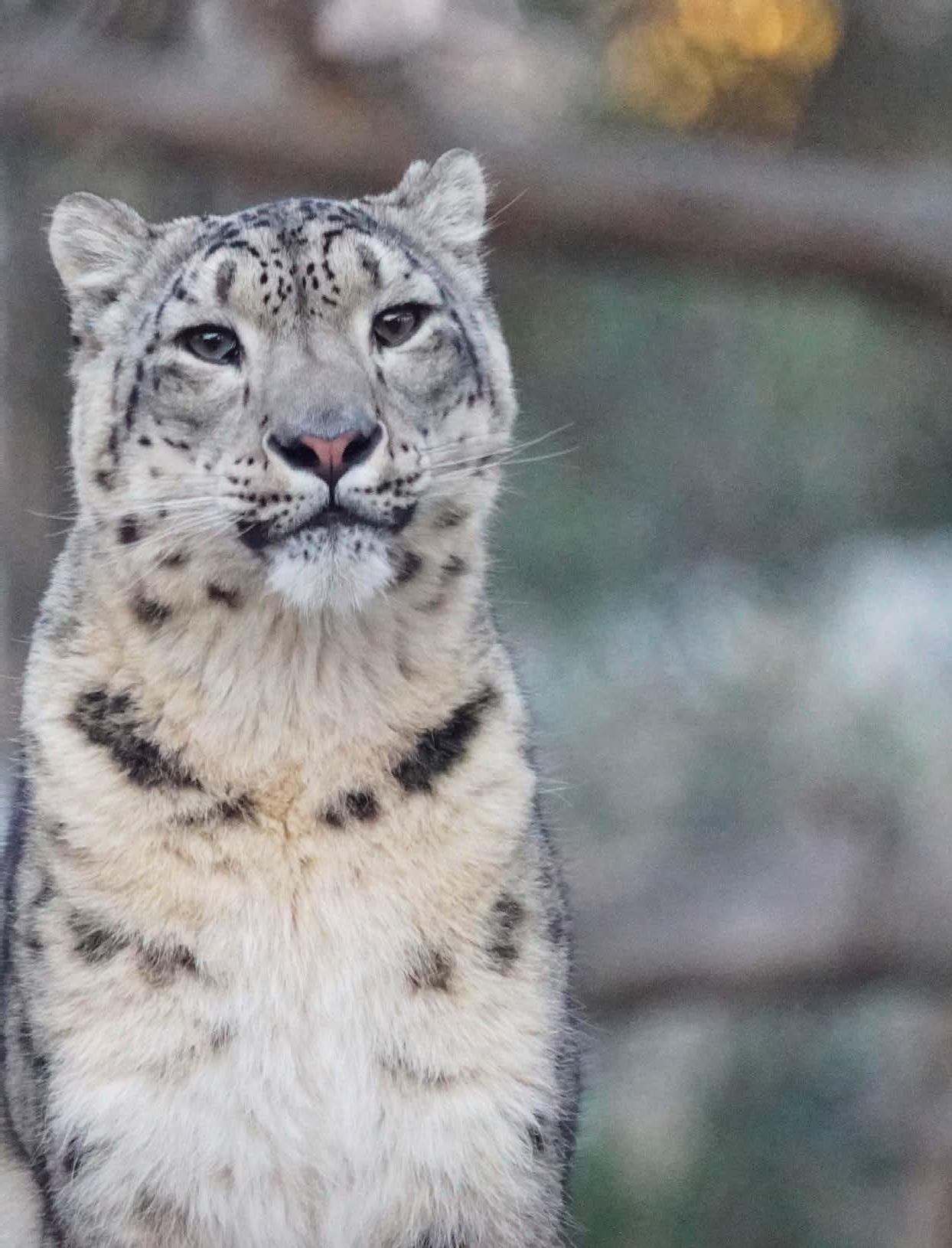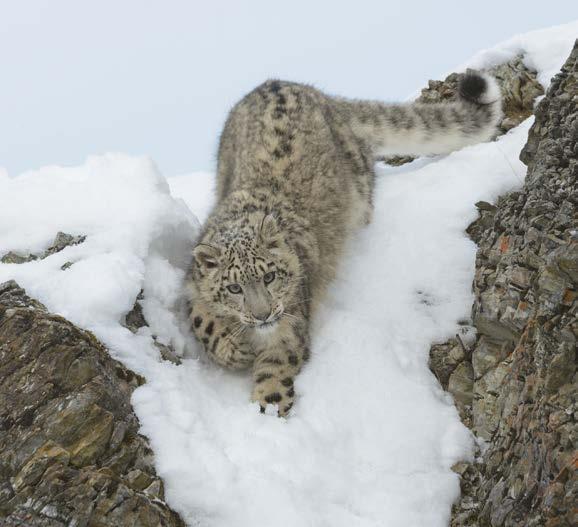
3 minute read
A uniting cause
We speak to two supporters who have adopted our Snow Leopard family at Melbourne Zoo.
WORDS Kate Schmitt IMAGE Alex Storer
JANE PONTING
Jane Ponting lives on Raymond Island, home to a thriving koala population and more than 130 species of native birds. But her favourite animal, the Snow Leopard, prowls mountain ranges on the other side of the world.
Jane became interested in Snow Leopards in the 1990s — a time when both Melbourne Zoo and the numbers of wild Snow Leopards were very different from today. In 1997, Jane’s partner Tom gave her a portrait of Shimbu, Melbourne Zoo’s eight-year-old Snow Leopard (who has since passed away). The painting still hangs above Jane’s bed.
“Shimbu was an idiosyncratic animal,” says Jane. “She had a bad temper, a huge ego and the most incredible spirit – Shimbu had a style of her own.”
More recently, Jane experienced a special behind-the-scenes encounter with Miska, Melbourne Zoo’s four-year-old Snow Leopard. “It was the best birthday present I’ve ever had.”
Jane has read widely about the Snow Leopard, prompting a lot of soul searching about endangered animals and how she can play her part. “I believe we have a responsibility to contribute in a small way, to look after wild animals everywhere. I’m fortunate that I’m in a position where I can support a vulnerable animal and contribute in a small way.”
CATRIONA ROWNTREE
Catriona Rowntree has visited zoos all around the world in her role as a reporter on the popular Getaway travel series.
“I’ve done stories on zoos in dozens of countries. I’ve been to the home of the Snow Leopard, literally. But I couldn’t wait to visit Melbourne Zoo with my own children.”
Catriona lives in rural Victoria, but she takes her two sons to the Zoo as often as she can. She has found that becoming an Animal Adopter of the Snow Leopard (through the zoo Philanthropy program) provides a great way to continue her connection with the Zoo. “I like the fact that you can take the Zoo home with you. I love the letters we receive from Melbourne Zoo. We pass them around the dinner table. We stick things up on the fridge and we go online to have a peek at the cubs.”
For Catriona, adoption was a good way to show her children how to help others and have fun while learning something in the process. “Yes, it’s altruistic. Yes, we’re earning our karma points. But if you’re looking for a tiny way to be a good role model for your children and lead by example, this is a great step. From a young age, my boys saw the importance of community service.”
Catriona’s family has, in turn, followed the family of Miska and Kang-Ju and their cubs. “We’ve gone on this incredible journey with our beautiful adopted animals. And I have to say, it makes for a very impressive show and tell.”
While parents often talk about giving back to the community, they sometimes struggle to find ways to achieve this in a way that engages with young, busy minds. “My kids know that I’ve sponsored a child overseas, but they can’t really connect to that. However, a cute little animal — and the soft toy version from the Zoo shop that they sleep with each night — offers an immediate physical connection.
“My family pays a monthly donation to have this close connection, and the whole experience has been really heart-warming.”
ADOPT AN ANIMAL!
You can adopt an animal too by visiting:
donate.zoo.org.au/adoption
WANT MORE?
Check out the Snow Leopard live cam

INTERNATIONAL CONSERVATION
Snow Leopards are among the world’s most elusive and solitary animals and are classified as vulnerable in the wild. They live in harsh mountain environments in Nepal, India, China, Pakistan and Afghanistan.
Threats include poaching and habitat destruction due to mining developments. In 2020, Zoos Victoria awarded Nomadic Guardians Foundation a grant to protect Snow Leopards in the wild and support local communities. The foundation operates the Mongolian Bankhar Dog Project, which works in collaboration with the Snow Leopard Trust. Bankhar dogs are placed with herder families to assist in the protection of livestock from predators (including the Snow Leopard) – eliminating the need to kill predator animals in order to protect their livelihoods.






